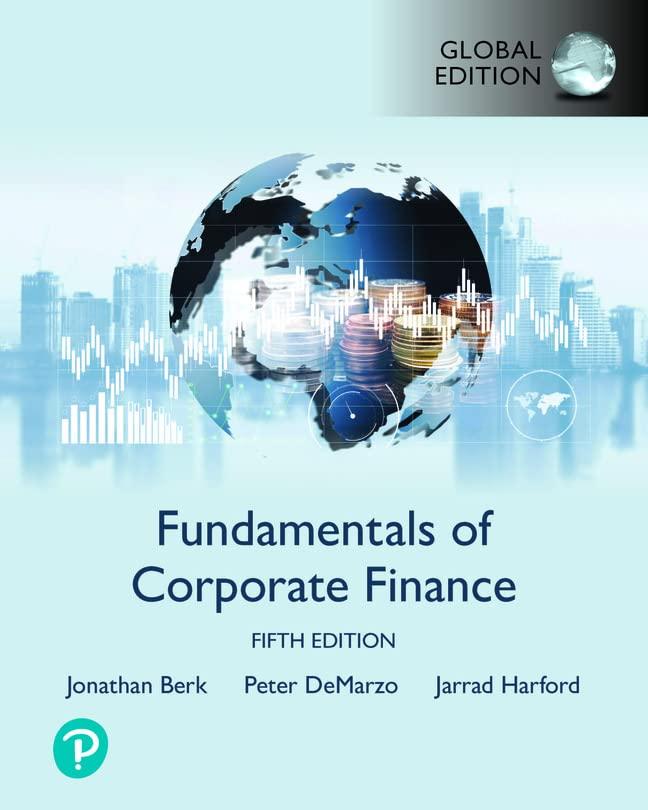In the Global Financial Crisis box in Section 6.2, Bloomberg.com reported that the three-month Treasury bill sold
Question:
In the Global Financial Crisis box in Section 6.2, Bloomberg.com reported that the three-month Treasury bill sold for $100.002556 per $100 face value. What is the yield to maturity of this bond, expressed as an EAR?
Global Financial Crisis:
On December 9, 2008, in the midst of one of the worst financial crises in history, the unthinkable happened: For the first time since the Great Depression, U.S. Treasury Bills traded at a negative yield. That is, these risk-free pure discount bonds traded at premium. As Bloomberg.com reported: “If you invested $1 million in three-month bills at today’s negative discount rate of 0.01%, for a price of 100.002556, at maturity you would receive the par value for a loss of $25.56.”
A negative yield on a Treasury bill implies that investors have an arbitrage opportunity: By selling the bill, and holding the proceeds in cash, they would have a risk-free profit of $25.56. Why did investors not rush to take advantage of the arbitrage opportunity and thereby eliminate it?
Well, first, the negative yields did not last very long, suggesting that, in fact, investors did rush to take advantage of this opportunity.
But second, after closer consideration, the opportunity might not have been a sure risk-free arbitrage. When selling a Treasury security, the investor must choose where to invest, or at least hold, the proceeds.
In normal times, investors would be happy to deposit the proceeds with a bank, and consider this deposit to be risk free. But these were not normal times—many investors had great concerns about the financial stability of banks and other financial intermediaries. Perhaps investors shied away from this “arbitrage” opportunity because they were worried that the cash they would receive could not be held safely anywhere (even putting it “under the mattress” has a risk of theft!). Thus, we can view the $25.56 as the price investors were willing to pay to have the U.S. Treasury hold their money safely for them at a time when no other investments seemed truly safe.
This phenomenon repeated itself in Europe starting in mid-2012.
In this case, negative yields emerged due to a concern about both the safety of European banks as well as the stability of the euro as a currency. As investors in Greece or other countries began to worry their economies might depart from the euro, they were willing to hold German and Swiss government bonds even at negative yields as a way to protect themselves against the Eurozone unraveling. By mid-2015, some Swiss bonds had yields close to -1%, and in 2016 Japanese government bond yields also dropped below zero. Although yields have increased since then, at the beginning of 2018 the amount invested in bonds with negative yields still exceeded $7 trillion.
These persistent and significantly negative yields are challenging to explain. Most of the holders of these bonds are institutions and pension funds who are restricted to hold very safe assets. And while they could hold currency instead, obtaining, storing, and securing large quantities of cash would also be very costly. (Indeed, Swiss banks have reportedly refused large currency withdrawals by hedge funds attempting to exploit the arbitrage opportunity.) Bonds are also much easier to trade, and use as collateral, than giant vaults of cash.
Together, the safety and convenience of these bonds must be worth the nearly 1% per year these investors are willing to sacrifice.
Step by Step Answer:

Fundamentals Of Corporate Finance
ISBN: 9781292437156
5th Global Edition
Authors: Jonathan Berk, Peter DeMarzo, Jarrad Harford





